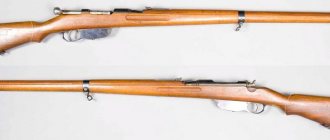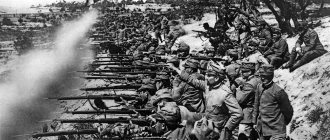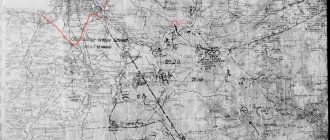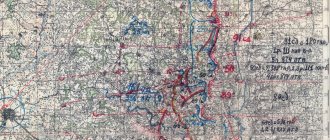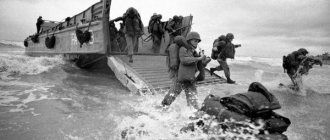The First World War brought enormous losses and destruction to the world. More than 18 million people died, four empires disappeared from the world map at once, and many historical and cultural monuments were destroyed during the fighting. But it was the war that gave a powerful impetus to the development of science and technology. About how the Great War influenced the development of aeronautics, about the heyday, triumph and decline of the German Zeppelins, predicted to the smallest detail by the author of “War of the Worlds,” in the material of Lenta.ru.
This text was included in the selection of the best texts of Lenta.ru for 2020. Read other texts from it HERE
The most humane weapon of war
“German airships hovered in the sky, like creatures from a completely different, future world. All completely identical in shape and size, heading towards the same goal, like a wolf pack, where each wolf knows exactly his place... Moving forward, the airships crushed block after block with the same ease with which a child scatters cities made of cubes. Ruins and blazing fires were left behind, dead bodies piled up and scattered. Men, women and children lay interspersed like some Arabs, Zulus or Chinese. The central part of the city turned into a huge fire, from which there was no escape. Cars, trains, ferries - everything stopped, and in this gloomy confusion the distraught fugitives encountered only the horror of destruction and the fire of fires.”
Illustration for H.G. Wells' novel "War in the Air"
Image from the collection of Peter Kamenchenko
The above excerpt is taken from the novel “The War in the Air” by English science fiction writer H.G. Wells. It describes how the gigantic German air fleet attacks England and the USA, how huge German airships mercilessly sink squadrons of battleships in the Atlantic, bombard plants and factories, and turn cities into ruins.
The author of The Time Machine, The Invisible Man and The War of the Worlds wrote these lines in 1907, when the bombing of London by German airships seemed no more real than the landing of Martians in Woking (Surrey).
Also in 1907, Ferdinand von Zeppelin was teetering on the brink of despair. The German count had already spent all his considerable fortune, pawned his family jewels, but the devices he built stubbornly refused to fly. With great difficulty they rose into the air, unsuccessfully fought the elements, and then fell, fell to pieces, burned and drowned in Lake Constance.
It seemed that the idea of creating large controllable lighter-than-air aircraft, but with a rigid frame, would remain the bold fantasy of the “mad count.” However, the 69-year-old fanatic did not want to give up. Having survived another disaster, he started all over again with truly German tenacity.
And, as a result, seven years later, the horror that H.G. Wells foresaw and described became a reality. The First World War began, and German Zeppelins turned into a nightmare for big cities - they bombed Antwerp, Warsaw, Paris, London, Liverpool...
On January 21, 1915, the German Kölnische Zeitung wrote in an editorial: “Our zeppelins have raised the fiery right hand over Britain. Haughty England trembles, awaiting new irresistible blows with horror. The most advanced weapon created by the genius of German engineers - the airship - is capable of hitting our enemy to the very heart. An eye for an eye, blood for blood. This is the fastest way to end the war victoriously, and therefore the most humane.”
An English stereo photograph from 1900 shows the "aeronautical observation park" of Lord Roberts's army in the vicinity of Pretoria (South Africa) during the Boer War
Image from the collection of Peter Kamenchenko
Meaning
The path of man's conquest of the sky was long and difficult. The first controlled aircraft were created out of the desire to fly and did not pursue a practical goal. But the presence of a passenger basket under the balloon would sooner or later lead to the question of whether the airship would be able to transport cargo. The answer to the question was given by Count Zeppelin, who became the founder of air cargo transportation.
In the 21st century, airships have not stopped being used. Modern models are capable of remaining in the air with their cargo for weeks or even months. They do not require a pilot to operate them and use less energy than other modes of transport. For example, the SAIC Skybus 1500E is designed to carry 700 kg of cargo and can stay in the air for 21 days.
The first airships, like modern ones, were used for two main purposes: transporting goods to places inaccessible to conventional transport, and carrying out meteorological observations and reconnaissance. They are ideal for constant surveillance of locations where explosive devices are suspected to be installed. Skeptics may think that the era of airships is over. In fact, it continues successfully.
Home of elephants and airships
To be fair, it should be said that aircraft with a rigid frame, but lighter than air, were invented much earlier and not in Germany. The history of the creation of airships and their evolution is not included in the topic of this article; we will dwell only on one curious and not the most famous episode.
At the height of the Napoleonic Wars, the German mechanic Franz Leppich approached the Russian envoy in Stuttgart with a proposal to build an airship for the Russian army, capable of “accommodating 40 people and lifting 12 thousand pounds of cargo.” According to the inventor, from this ship it will be possible to throw bombs at enemy armies, which in turn “will make wars useless and free humanity from hellish destruction.” (Another romantic and savior of humanity. And also German!)
They reported to the king. Alexander I liked the idea. Funds were allocated from the treasury - 163 thousand rubles, a huge amount at that time, and soon the first “airship shipyard” was built in the village of Vorontsovo near Moscow. The project was supervised by the formidable Minister of War Count A.A. Arakcheev. According to surviving records, the airship had an oblong shape, a fabric shell on a semi-rigid frame, and was supposed to be driven by a mechanism using the muscular power of the crew.
They did not have time to complete the construction of the world's first combat airship. In August 1812, Napoleon's army was rapidly approaching Moscow. The unfinished airships were destroyed, and the workshop itself was evacuated to Nizhny Novgorod, then to Oranienbaum, where the project gradually died out.
However, according to surviving documents and, in particular, the report of General D.F. Vyndomsky to the Minister of War, experimental models took to the air on “leashes,” although they had not yet been able to fly “against the wind.” It turns out that Russia is not only the birthplace of elephants, but also of airships.
Designer of the first airship
Archimedes' law of buoyancy explains why an airship flies and does not fall. A body immersed in a liquid or gas is acted upon by a force equal to the volume of the displaced substance. In this case, the airship displaces air. The gas with which it is filled weighs less than the displaced air, so the structure gains the ability to float in the skies.
In total, 19th century designers created 3 types of airships:
- non-rigid (what is called an airship);
- semi-rigid;
- hard (zeppelin).
The balloon creators enjoyed the triumph of the flight, and the public admired their courage. Unfortunately, the ball flew under the influence of the wind. Attempts to improve maneuverability led to a change in shape from spherical to elongated. To give the structure an impulse to move, a driven screw was installed. This is how the first airship appeared.
The first airship was invented by the French engineer Henri Giffard. The designer attached a small steam engine to the propeller and managed to fly 17 miles (27.36 km) through the air. The maximum speed was 5 mph (8 km/h). Giffard controlled the apparatus using steering levers. The first airship appeared in 1852.
Description of the device:
- weight – 50 kg;
- weight with steam boiler – 150 kg;
- shape – cigar-shaped;
- length – 44 m;
- diameter – 12 m;
- volume – 2500 cubic meters. m. gas;
- steam engine power – 3 liters. With.
The first airship did not have a separate name. As for Giffard airships in general, three models were developed. The first was invented in 1852, the second in 1855. In the last years of his life, the designer worked on a giant airship with a length of 600 m and a volume of 220,000 cubic meters. m, but did not have time to finish it.
From hot air balloon to the first zeppelin
But we've gone off topic. Let's return to the desperate, but not broken von Zeppelin. The German count was neither an engineer, nor a scientist, nor a genius inventor. His main merit was that he managed to create the first successful serial airship and organize its production. He dedicated his whole life to this.
German postcard from 1938, issued in honor of the 100th anniversary of the birth of Ferdinand von Zeppelin (1838-1917), which was celebrated with great pathos in Germany
Image from the collection of Peter Kamenchenko
For the first time, professional military man Ferdinand von Zeppelin took to the air in a hot air balloon during the American Civil War (1861-1865), where he served as a military observer. Later, during the Franco-Prussian War (1870-1871), as a cavalry scout, he was able to observe how balloons with mail and people on board rose from besieged Paris.
The prospect of producing gigantic airships that would raise Germany's military power to limitless heights so captivated the count that in 1887 he sent a memorandum to that effect to the King of Württemberg. In German military circles the proposal was considered nonsense, but William II liked the passionary, and the count received the post of royal adjutant.
In 1890, with the rank of Major General, von Zeppelin left military service in order to devote all his free time and available funds to a new hobby - airships.
To develop new aircraft, Zeppelin invited talented designers, engineers and experienced mechanics, to whom he was able to clearly explain the problem and helped in every possible way with its solution. First of all, organization and money. In 1898 he founded the "Joint Stock Company for the Promotion of Controlled Aeronautics" (Aktiengesellschaft zur Förderung der Luftschiffahrt) with a fixed capital of one million gold marks.
In April of the same year, a boathouse for airships was built in Friedrichshafen on Lake Constance near the city of Constance, where von Zeppelin was born. It was a large structure, floating on 80 pontoons: 142 meters long, 23 meters wide, and 21 meters high. It was here that the first Luftschiffbau Zeppelin, or LZ-1, was laid down - an airship that had no analogues in the world, the prototype of all future Zeppelins.
Getting closer to communication with submarines
At the beginning of the twentieth century, airships were actively used for military operations.
Germany had 11 combat airships. The range is like that of airplanes, the altitude is 2400 meters, the targets are bombing and reconnaissance. Imagine this is such a hefty flying fortress. You can carry two orders of magnitude more bombs on board than the largest bomber aircraft. Place machine gun nests around the perimeter of the gondola, take fuel and supplies for a month - and start moving towards the goal. Just an idyll world from the anime Last Exile. Especially how to remember the concepts of calculating battles “our airship against the enemy side to side” - boardings and other delights were thought through in tactics, perhaps familiar to you from the already mentioned anime.
But it didn’t work out.
However, it turned out that this entire structure is very easy to knock down. Hitting the airship is easy, and even ten cameras won't help much if you get caught by a persistent enemy fighter pilot. And the practice of flying the Z-7 showed that the enemies quickly realized this.
It’s also easier to bomb an airship than to shoot it. You just go higher and underneath you there’s an object the size of a city square.
But the battles showed that airships could also bring a few surprises. For example, dropping ballast and sharply “jumping” above the altitude available to the fighters of that time was a key survival factor. And the airship could hide in a cloud and not stick out. Well, good defensive weapons made it possible to more or less clearly fight off several aircraft.
Ground stations tried to capture the airship at night with a searchlight so that it could be clearly seen - and then it was screwed, because almost everyone could get in.
On the other hand, let me remind you that airships still have an absolutely monstrous carrying capacity. But planes (and submarines) then were very, very limited in terms of range. We started trying to attach airplanes to airships. First, three pieces each:
Damn Protoss
And then more. For those who are interested in the history of aircraft carriers, you can see a little more pictures here, there is a stunning photograph of a landing of fighters from aboard a large airship. How to unleash a couple of thousand drones with facial recognition and small explosive charges on a city.
The upper part of the zeppelins was even enough to organize a landing strip, like on aircraft carriers, but I don’t know about the combat implementation of these plans.
Now about the submarines. Then, in the era of airships, submarines did not have an anti-aircraft periscope. That is, no one thought that it would be necessary to look up. This was an obvious bug, and an exploit was found very quickly - the airship could watch the water area from above for hours and days, from where everything that was moving around under water was clearly visible, tens of meters away.
Submarines were stupidly slower than airships even against moderate winds.
The submarines had no weapons against such flying crap, but the airship had bombs. Around the same time, the first guided torpedoes (via cable) began to appear, which could be perfectly aimed from airships.
But it didn’t work out either; the next generation of boats was already perfectly equipped with everything necessary.
As a result, airships were forced into the defensive - they could well repel attacks by enemy aircraft for some time, plus they had excellent capabilities for reconnaissance, specifically direct observation. The last great doctrine is to use them as naval supply bases. Diesel submarines were not very autonomous, and largely depended on their fuel supply. The airship could hang where needed, see enemy ships from afar, give guidance to its boats, wait for them to return from a mission, refuel and supply from the air - and leave. It was even assumed that there would be a special lowering basket for these actions - the airship itself could remain very high.
But if they were used as reconnaissance for guiding boats, then as a refueling vessel - no longer, as far as I understand.
LZ-1 takes to the air
The 128-meter frame of the LZ-1 was assembled from aluminum profiles and covered with varnished cotton fabric. The diameter of LZ-1 was 11.7 meters. The airship had 17 compartments with cylinders filled with 11,300 cubic meters of hydrogen. The cylinders were made of single-layer rubberized cotton fabric. This entire structure, the size of a cruiser, was supposed to move in the air with the help of two Daimler engines with a power of 14.7 horsepower and a weight of 420 kilograms. Below, under the hull, there were two gondolas 7 meters long and 1.8 meters wide.
On a German postcard from 1907 there is still a whole LZ-3 on the shore of Lake Constance. In September of that year, he stayed in the air for eight hours.
Image from the archive of Peter Kamenchenko
Zeppelin made his first flight on an airship of his own design at the age of 62. Thousands of spectators gathered on the shores of Lake Constance were amazed by the appearance of the “mad count”’s flying car. A tug pulled the giant “sausage” out of the boathouse onto the water.
The LZ-1 stayed in the air for 20 minutes, but suffered during landing due to frame deflection. It was under repair for several months. After which, in October 1900, he made his second and third flights, reaching a height of 400 meters and a speed of 28 kilometers per hour.
The costs of building the airship, boathouse and their maintenance were so high that in 1901 they led the company to financial collapse. Von Zeppelin was left without funds to build a new airship. To top it all off, a hurricane sank the boathouse and destroyed LZ-1.
Tactical and technical characteristics of military airships
The most important parameters of P and R class zeppelins are as follows:
| P class | R class | |
| Length | 163.5 m | 196.49 m |
| Diameter | 18.69 m | 23.9 m |
| Internal volume | 32,920 m | 55,210 cubic meters |
| Power plant power | 840 hp | 1440 hp |
| Maximum speed | 92 km/h | 100.6 km/h |
| Cruising speed | 63 km/h | no data |
| Service ceiling | 3,500 m | 4,000 m |
| Maximum flight duration | no data | 36 hours |
The crew of the P-class zeppelin consisted of 19 people: It included: the ship's commander, chief mate, chief engineer, 8 mechanics, a navigator, 4 helmsmen (two controlled the elevators, two controlled the rudders) and three gunners. The last, nineteenth crew member was responsible for the condition of the gas cylinders and maintaining the required pressure.
The flaming ball crashed to the ground
Zeppelin was looking for money to continue work, but neither the state, nor the military, nor large entrepreneurs wanted to invest in the dubious project. Only in 1905, after a charity lottery in favor of aeronautics was held in Württemberg with the assistance of the king, the frame of the LZ-1 was sold for scrap, and the count himself parted with most of his property, he managed to collect 400 thousand marks needed to build the LZ -2.
Airships Hindenburg (LZ-129) and Graf Zeppelin (LZ-127, in the air). The Hindenburg took part in the opening of the Olympic Games in Berlin in 1936, which is why it has the Olympic rings on board. The death of the Hindenburg on May 6, 1937 would virtually determine the future of aeronautics. German postcard from 1936
Image from the collection of Peter Kamenchenko
However, misfortunes continued: when being taken out of the dock, the new zeppelin was picked up by the wind and carried across the lake. It was possible to catch up with him only off the Swiss coast. After repairs, the LZ-2 took off and reached an altitude of 450 meters, but then the rudder and one of the engines failed. With great difficulty, the airship was landed on land, where it was destroyed by a storm wind.
It would seem that this is the end. But the stubborn old man pawned the family jewels and in October 1906 took off on his third airship, LZ-3. In September 1907, the LZ-3 stayed in the air for eight hours, and in December a storm raging on Lake Constance destroyed the boathouse and the airship was lost.
The following year, LZ-4 died. This is how 20-year-old Ernst Heinkel, the future famous aircraft designer and founder, remembers it.
"To England!" German propaganda postcards from 1914
Image from the collection of Peter Kamenchenko
Airships in the First World War
The First World War showed the prospect of using airships as weapons. They were distinguished from airplanes by their greater carrying capacity and the ability to inflict significant damage on enemy troops from the air. By the beginning of the war, Russia had created a fleet of 20 airships. Germany had only 18 aircraft of this type at its disposal.
The Russian airship Albatross was built at the Izhora plant near St. Petersburg. It became one of the largest available by 1913. "Albatross" made flights lasting up to 20 hours. For other devices, the maximum time remained 10. The maximum load capacity was 3530 kg. Speed – 60 km/h. The Albatross was armed with 3 Maxim machine guns.
For bombing it was equipped with bomb racks. The Albatross made several combat missions, but crashed in October 1914 during an emergency landing.
The question of the prestige of the German Empire
We do not know how quickly the novel by the English science fiction writer was translated into German and whether Kaiser Wilhelm II read it in 1908, but it was in it that one could find the solution to the most difficult strategic task of the German Empire in the future world war. Nobody particularly doubted that it would begin sooner or later. England, located across the sea straits, was Germany's main rival in the struggle for world power. But no matter how hard German shipbuilding tried, Britain, like a hundred years ago, remained the undisputed mistress of the seas, and could only be reached from the air.
The German military became seriously interested in airships. On their initiative, the Reichstag allocated more than one and a half million marks to Zeppelin for the implementation of his projects. Zeppelin was supported by Kaiser Wilhelm II, parliament and a powerful wave of popular solidarity. Active propaganda led to the fact that the success of the enterprise began to be viewed as a matter of German prestige. In a short time, Zeppelin received another 8 million marks in voluntary donations.
One can only admire the determination, energy and organizational skills of the 70-year-old count. In a short time, he expanded his enterprise from a limited liability company to a large concern, which included not only enterprises for the development and construction of airships, but also the Maybach Motorenbau GmbH aircraft engine plant, a factory for the production of special fabrics, aluminum and duralumin structures, drive mechanisms, hydrogen, construction company, etc.
One of Zeppelin's subsidiaries was the passenger company DELAG (Deutsche Luftschiffahrts-Aktiengesellschaft), created to transport people and cargo by airships. Each of the seven DELAG airships had its own name: Deutschland (LZ-7), Schwaben (LZ-10), Viktoria Luise (LZ-11), Hansa (LZ-13), Sachsen (LZ-17)… With the outbreak of the First World War LZ-11, LZ-13 and LZ-17 were transferred to the German army.
Civilian zeppelins of the DELAG society: Hansa (LZ-13) and Viktoria Luise (LZ-11). With the outbreak of World War I, both were transferred to the German armed forces
Image from the collection of Peter Kamenchenko
From 1910 to 1914, civilian zeppelins made about 1.6 thousand flights and transported more than 37 thousand people. Airship accidents occurred, but fortunately only when there were no passengers on board. It is DELAG that is rightly considered the world's first passenger airline.
DELAG's civilian zeppelins survived the war and continued to fly until 1935, when the Deutsche Zeppelin Reederei (German Zeppelin Transport Company) was created, a state-owned enterprise that owned the famous airships Graf Zeppelin (LZ-127) and Hindenburg (LZ-129), which flew weekly flights to South and North America.
And yet, the main engine of aeronautics progress was military orders. In the summer of 1909, the LZ-5 was accepted into army service and given the army designation Z-II. Subsequently, army airships were designated by the letter Z and a Roman numeral. The Z-II managed to make a successful flight lasting 38 hours, covering 1,100 kilometers during this time.
In 1911, Zeppelins were incorporated into the German Navy as a reconnaissance, mine-laying and bombing force. Naval zeppelins were designated by the letter "L" and an Arabic numeral. The first naval airship - L-1 - was a zeppelin with serial number LZ-14. In a number of cases, new devices that entered service were assigned “vacated” designations. Hence some confusion in the numbers and designations of zeppelins.
German zeppelin over Warsaw. German postcard from 1915-1916
Image from the collection of Peter Kamenchenko
History of creation
It is not known exactly when and by whom balloons were invented. In China, these aircraft were used for entertainment purposes at the beginning of the 14th century, and in Europe, the most famous were hot air balloons - balloons filled with hot air. They were invented by Joseph-Michel and Jacques-Etienne Montgolfier in 1783.
A few months after the first hot air balloon flight, another French inventor, Jacques Charles, created a balloon filled with hydrogen. This made it possible to significantly increase the lifting force of the balloon, but its main drawback remained - the aircraft still remained uncontrollable, its flight was entirely dependent on the direction and strength of the wind.
To change this situation, the balloon had to be equipped with a propeller and a sufficiently powerful engine, but even in the middle of the 19th century such a thing could only be dreamed of. In 1852, Henri Giffard built a cigar-shaped balloon and installed a small steam engine on board.
The airship of Henri Giffard.
This airship was able to perform a number of maneuvers during the test flight, but it was impossible to move it against the wind - after all, the engine power was only three horsepower.
Later, controlled balloons similar to Giffard’s apparatus began to be called airships (from the French word dirigeable, which means “controlled”). Interest in them grew in all developed countries of the world in the second half of the 19th century. Heavier-than-air flying machines seemed at that time something not very real, something that would appear only in the distant future, while balloons made increasingly longer flights.
In 1874, a German officer, Count Ferdinand von Zeppelin, attended a lecture on air travel given by the Postal Director General of the German Empire, Heinrich von Stephan. Soon after this, von Zeppelin wrote an entry in his diary, which talks about the design of an unusual airship. Its basis was to be a rigid power frame, on which a dense skin was stretched. Inside this case it was supposed to place several cylinders, isolated from each other, filled with hydrogen. This design made it possible to get rid of one of the main disadvantages of previous airships, the hull of which, not possessing significant rigidity, could be deformed at any time by a gust of wind or inflated due to the expansion of hydrogen during climb.
Ferdinand von Zeppelin served in the cavalry, but his interest in aeronautics began in 1863, when he visited the United States and saw how balloons were used for reconnaissance. Subsequently, already during the Franco-Prussian War, the count himself used military balloons. Nevertheless, he managed to take up his “hobby” seriously only after his retirement, when he was already 52 years old.
Count Ferdinand von Zeppelin, inventor of the rigid airship.
Beginning in 1891, Zeppelin worked on the design of the airship he described in his diary. A few years later, he managed to obtain a patent for his invention, but in order to build an airship, a lot of financial resources were required. The count failed to receive support from the German government, and then he turned for help to Karl Berg, a major entrepreneur who was known as an aeronautics enthusiast.
At that time, Berg had already financed the construction of an airship invented by David Schwartz, a subject of the Hungarian king, but the design proposed by von Zeppelin seemed more promising to the industrialist. In 1898, the “Society for Promoting the Flight of Airships” was created with an authorized capital of 800 thousand marks (half was invested by the count himself), and soon a floating hangar appeared on Lake Constance, in which the construction of the airship LZ 1 began. This abbreviation stood for Luftschiff Zeppelin, that is, "Zeppelin airship". Subsequently, the word “zeppelin” became a common noun – all rigid airships began to be called it.
One of the first problems was getting the aircraft out of the hangar gate in windy conditions. Actually, it was precisely because of this that the construction site was made floating - this made it possible to arbitrarily turn it in any direction. On July 2, 1900, LZ 1 made a test flight. During the landing, the airship suffered several damages and required repairs that lasted several months. Simultaneously with the repair, several changes were made to the design, thanks to which the two subsequent test flights were completed quite successfully. The speed of the zeppelin reached 21.6 km/h.
First flight of the airship LZ 1.
Soon the Luftschiff Zeppelin company had to be liquidated - the shareholders did not want to continue financing. It took the Count almost five years to build his next airship, the LZ 2. Von Zeppelin spent almost all his savings on this, as well as money received as a result of mortgaging his wife's property. And again the inventor failed - LZ 2 made only one flight. Both engines of the airship failed, and after an emergency landing, the airship became a victim of the storm, receiving “incompatible with life” damage.
In October 1906, the LZ 3 took off. This time the aircraft was so successful that it attracted the attention of the War Ministry of the German Empire. Von Zeppelin was promised funding, but only on the condition that his airship could stay in the air for a whole day. The maximum flight duration of the LZ 3, achieved in the early autumn of 1907, was more than eight hours, but it was already clear to the Count that a more advanced airship was needed. In addition, in December of the same year, LZ 3 became the victim of another storm - it destroyed the mooring mast, and the uncontrolled airship, flying a little downwind, fell and crashed.
Construction of LZ 4, which used the last of the Zeppelin family's once impressive fortune, was completed in the early summer of 1908. On June 20, the airship departed from Lake Constance to Zurich and then back, covering approximately 386 km. The flight took place at an altitude of about eight hundred meters. By August, the device was prepared for a flight lasting a day, but this time too a disaster occurred - during a short stop, when no one was on board, the airship, under the influence of a gust of wind, collided with a tree and burned out almost instantly.
Airship LZ 4 at the moment of leaving the hangar, in the air and after the disaster.
Count von Zeppelin turned 70 in 1908, and this incident seemed to put an end to his “adventures,” but the many years of efforts of the stubborn, if not fanatical, inventor attracted significant public and government attention. Soon the count had more than six million marks at his disposal, of which one and a half were issued by the War Ministry. These funds made it possible to create a new company called Luftschiffbau Zeppelin GmbH (closed joint-stock company for the construction of airships).
In the coming years, Zeppelin's enterprise grew noticeably and became a full-fledged concern, part of which was the Maybach Motorenbau plant, which produced aircraft engines. In addition, in 1909, on the initiative of the count, the DELAG company appeared, the main task of which was to organize passenger transportation on airships.
Initially, “civilian” Zeppelins only made air excursions, demonstrating their capabilities to the public. These flights almost led to the world's first crash of a passenger aircraft - the airship LZ 7 "Germany", carrying 19 journalists, fell onto the slope of Mount Limburg. Fortunately, only one member of the crew was injured; all the others were not injured.
Military zeppelins, “entering service,” received new names. Airships purchased for ground forces received the designation Z and a number written in Roman numerals. The Navy used the letter L and a number written in Arabic numerals.
Before the outbreak of the First World War, 21 zeppelins were built in Germany. By the start of hostilities, some of these airships had already been written off or crashed.
Passenger zeppelin LZ 7 Deutschland (“Germany”). The photo was taken on June 22, 1910.
During mobilization, all passenger airships remaining in service were transferred to the army. In addition, immediately after the outbreak of hostilities, Luftschiffbau Zeppelin GmbH came completely under government control, as did its main competitor, Schütte-Lanz. As a result, there was an exchange of technical solutions beneficial for both parties, after which the development of rigid airships noticeably accelerated. In August 1914, production of M-class Zeppelins began, created taking into account the already existing wishes of the military. Then larger and faster airships of the P, Q and R classes (the largest and most heavily armed) appeared. At the end of the war, some of the Zeppelins were lightened in order to increase the practical ceiling - in this way, the designers hoped to make the airships less vulnerable. This class of airships received the designation U.
Zeppelins go into battle
With the outbreak of World War I, zeppelins also entered the battle. Since the process of creating and testing aerial bombs had not yet been completed by the summer of 1914, conventional artillery shells were dropped on the enemy, to which long felt belts were attached for stabilization. They were thrown from a gondola or from an “observation basket” (Spahkorb), which was lowered from the airship, sometimes several hundred meters, on long steel cables. An observer on the phone guided the airship to the target, while the zeppelin itself could remain above the clouds and not be visible from the ground.
From the first days of the war, German zeppelins carried out reconnaissance flights deep into enemy defenses, carried out air strikes, but to a greater extent had a serious psychological impact on the enemy’s morale, causing demoralization and panic in his ranks.
A couple of years will pass, and airplanes will become the main weapon in the fight against airships (this is how another prediction of H.G. Wells will come true), but at the beginning of the war the most fantastic methods were invented to repel attacks.
Here, for example, is what the St. Petersburg newspaper “Russian Invalid” wrote in November 1914: “A French inventor named Guerre came up with a special kind of arrows, the main target of which would be airships. This arrow consists of a strong steel needle. With its rod it enters a cylindrical tank filled with 0.2 liters of gasoline. Six small hooks catch the arrow when it hits an object made of cloth or the like. When the arrow hits the target, it simultaneously enters the cylinder and strikes the primer, which ignites the gasoline. Small steel wings at the rear end of the boom provide stability in flight. Experiments made from the height of the Eiffel Tower are said to have been very successful.”
A street in Newport, England, after a German Zeppelin raid. French postcard from 1916
Image from the collection of Peter Kamenchenko
Design Features
Despite the fact that the size of zeppelins gradually increased during the First World War, and the shape changed from class to class, becoming either emphatically elongated or more streamlined, the basic principles of their internal structure were preserved. As a typical example, we can take the design of the P-class LZ 46 zeppelin that survived the war, which received the designation L 14 in the army.
The power frame of this airship is formed by stringers (longitudinal beams) and frames (transverse ring frames). All these elements were made of aluminum alloy, the exact composition of which was kept secret until the very end of the First World War.
Most stringers had a triangular cross-section, but those intended to support the upper part of the airship's skin were twice as thick. The profile of such elements resembled the letter W. The frames divided the hull of the airship into 16 compartments. The length of each of them was 10 meters.
Zeppelin R Class L 31 in flight.
Inside the compartments were cylinders filled with hydrogen and creating lift. Polymers had not yet been produced at the beginning of the 20th century, and therefore the gas-tight shell of the cylinders had to be made from the outer part of a bovine intestine that had undergone special treatment. In England, such material in those years was called goldbeater's skin. At the bottom of each cylinder there was an automatic emergency pressure relief valve. Some containers were also equipped with manually operated taps. They were located at the top of the cylinders.
When the valves were activated, hydrogen freely came out, rose and penetrated into the external environment through the upper part of the airship skin, which was specially made leaky for this purpose.
A bow gondola was suspended from below to the front of the airship. It was divided into two separate sections. The first of them contained the following compartments:
- Control compartment. Located at the front. Provided the helmsman with visibility forward, down, to the sides and partly up.
- Communications compartment. Inside there was a radio station and a radio operator's workplace.
- Officer's cabin. In the “civilian” version it was intended for rest of the crew commander; in the military version, machine guns were installed in the side windows of the cabin.
In the second section of the bow gondola there was only one compartment - the engine compartment. One of the engines was located there. It drove a stern propeller connected to the motor by a transmission shaft and gearbox.
The aft gondola was suspended from the rear of the airship in such a way as to completely balance the bow. It was intended to accommodate three motors, one of which was connected to the second stern propeller, and the other two to the propellers located on the sides of the zeppelin hull. This gondola also contained two machine guns for defense against lateral attacks.
A fragment of one of the gondolas of an R class Zeppelin.
Maneuvering was carried out using massive “fin” rudders located at the stern of the aircraft. Behind them, at the very end of the hull, there was a small rear gunner's cabin, in which another machine gun was installed.
There was a small platform on the “back” of the zeppelin. You could get there via a special staircase from the bow gondola. This platform was intended to accommodate another defensive installation, consisting of two or three machine guns.
Power point
Initially, P-class Zeppelins were powered by four Maybach CX engines. The power of each of them was 210 horsepower. Then six-cylinder Maybach HSLu engines began to be installed on these airships, as well as on larger Q-class ships. Their power was increased to 240 hp.
On the largest R-class Zeppelins, the number of engines was increased to six. This made it possible to increase both the speed and carrying capacity of airships.
Armament
To defend against enemy fighters, the Zeppelins used 7.92 mm machine guns. “Naval” airships were usually equipped with the MG.08 (a German version of the Maxim machine gun), and “army” airships were usually equipped with the Parabellum MG.14 (also a “Maxim” variant, but with the casing removed and air-cooled). The number of machine guns on P-class Zeppelins was 7-8, and on R-class ships there were ten.
Air bombs of various calibers were used to strike ground targets. They were suspended from the keel beams, and the release was carried out using a special electric machine upon command from the control compartment. The size of the bomb load could vary significantly depending on the flight range.
One of the first aerial bombs designed for use with zeppelins.
For P-class Zeppelins, the normal load was about two tons. For R-class airships, this parameter reached five tons. There are known episodes when zeppelins took on board about ten tons of bombs (in particular, during raids on England).
At the beginning of the war, there were no special aircraft bombs yet, and therefore the zeppelins dropped ordinary artillery shells of 102-152 mm caliber on the enemy, with a canvas tape glued to them, which acted as a stabilizer.
First Battle of Britain
In 1940, the Wehrmacht was preparing to land on the British Isles. The Luftwaffe's strategic mission included suppressing the enemy's air forces, destroying its military industry and providing air cover for the landing operation. The German air fleet failed to cope with these tasks in World War II. The air Battle of Britain was lost, Operation Sea Lion failed.
A quarter of a century earlier, the German air fleet had already made a similar attempt. Only instead of Henkels, Junkers and Messerschmitts, Zeppelins flew over Britain. And everything was for the first time then.
On January 19, 1915, for the first time in the practice of military operations, German air forces attacked enemy military installations in its deep rear, on the territory of the British Isles, previously considered absolutely inaccessible to attack from sea or air. This day can be considered the birthday of strategic aviation.
From a military point of view, the L-3 and L-4 raid on coastal Yarmouth was not particularly successful. The military factories were not damaged, the bombs destroyed several residential buildings in the city center, four people were killed and 16 were injured. But the psychological effect was enormous. From that time on, no one anywhere in the British Isles could consider themselves safe. People peered in horror at the night sky, where giant enemy airships sailed ominously in the beams of searchlights. The fantastic picture was accompanied by deafening bomb explosions and the roar of air defense guns.
German zeppelins attacked targets throughout the UK, even reaching as far as Scotland. Together with the powerful psychological impact on the enemy, systematic raids forced the British to maintain large aviation and air defense forces to protect the islands from all directions, which eased the position of German forces in France.
The inevitability of the death of a large number of civilians during the bombing of densely populated centers was well understood by the Germans. But this was an “unrestricted war.” The same one that German submarines carried at sea. The only thing Kaiser Wilhelm II insisted on was a ban on the bombing of the royal palace. Apparently, out of related feelings.
The commander of the Airship Division of the German Navy is “crazy lieutenant” Peter Strasser. German postcard from 1916
Image from the collection of Peter Kamenchenko
Strasser Naval Division
The commander of the Division of airships of the German Navy (sea airships marked L), which carried out raids on Britain, was the “crazy lieutenant” Peter Strasser. The nickname stuck to Strasser with the light hand of Admiral Alfred von Tirpitz, whom he more than once drove into rage with plans to build more and more Zeppelins.
The most experienced, capable and long-lucky officer of the Strasser Division was Heinrich Mathy, who came to aeronautics from the navy. His raid on 8 September 1915 was the most successful Zeppelin attack on the British capital. That night, L-13 dropped about two tons of high-explosive and incendiary bombs on London.
The city center was darkened, but Mati, who had been to London more than once before the war, found his way around without difficulty. Flying over the English capital, the German airship selected targets for bombing with impunity. Here is the testimony of the senior mechanic of L-13: “We dropped the largest bomb from a height of about 2.5 kilometers. The scale of destruction caused by the 300-kilogram monster was monstrous. An entire city block was reduced to a pile of debris and rubble. A few seconds later, a fire began to flare up at this place, which then engulfed the entire central part of London ... "
Mati dropped the last high-explosive bombs on Liverpool Station, smashing two omnibuses with passengers into fragments. Leaving behind 109 dead and wounded and half a million pounds of damage, L-13 disappeared into the night sky of England.
The next day, London newspapers wrote: “In 12 minutes, a single raider caused damage to the capital of the British Empire comparable to losses in a major military operation.”
During 1915, 37 German Zeppelins carried out 20 raids on Britain, dropping 37 tons of bombs, causing serious damage to the country's economy, killing 208 and wounding 430 people.
The death of the German Zeppelin. French propaganda postcard
Image from the collection of Peter Kamenchenko
Airplanes take revenge
The following year, the situation of the German Zeppelins deteriorated noticeably. Propaganda of the Entente countries emphasized the vulnerability, clumsiness and slowness of airships. Photos of downed Zeppelins filled the pages of the Allied press. Below is an excerpt from the Russian newspaper “Evening Time” (Petrograd, October 1916):
“Wounded officers who arrived in Petrograd talk about zeppelins - this pride of Wilhelm. As it turns out, what people have been shouting about for the last three years is not so scary. The "invincible Zeppelin armada" exists more in the German imagination than in reality.
“You will never see this giant cigar during the day,” the officers say. “Such bravery would have cost the Zeppelin too much.” But as soon as night falls, a sensitive ear can already distinguish the noise of engines, which is prudently restrained by a muffler. As soon as the soldiers learn about the approach of the zeppelin, their joy knows no end.
- The Count is flying! The Count is flying! - rushes throughout the camp.
Those who can jump out of the trenches and consider it their duty to fire a couple of bullets towards the zeppelin. The artillerymen immediately rush to the guns, and lo and behold, after just a few minutes a huge mass, slowly floating through the air, flattens out, turns into a lump and falls. The moment the zeppelin falls is terrifying. Bombs explode, engines stop, and the aviator dies.”
Effective air defense systems began to develop everywhere. But the main and most terrible rival of airships in the sky were new airplanes. For them, the huge, hydrogen-filled, lightly armed Zeppelins made an excellent target. At the end of 1916, the British were able to deploy 110 aircraft and 12 thousand air defense troops to combat airship raids.
On September 2, 1914, a French pilot in a Bleriot airplane shot down a German Taube with machine gun fire. French postcard from 1914
Image from the collection of Peter Kamenchenko
The first ever dogfight between an aircraft and a Zeppelin took place on June 7, 1915. A German LZ-37 was attacked by Second Lieutenant Warneford. The British pilot was able to lift his Morane-Saulnier LA over the zeppelin and drop six nine-kilogram bombs onto the giant airship. A giant (158 meters long) engulfed in flames crashed to the ground near the Belgian city of Ghent. The pilot's merits were awarded the Order of the British Empire.
Zeppelin sunset
On October 2, 1916, during his 13th military raid on Britain, Heinrich Mathy died along with the airship. On approach to London, his new L-31 was attacked by three British airplanes.
One eyewitness later recalled: “It seemed that he was floating on top of a pyramid formed by the beams of searchlights. Three planes approached the zeppelin and began to fire at it from all sides, not paying attention to the nearby explosions of anti-aircraft shells. At some point, the airship burst into flames, turned into a flaming ball and began to slowly fall down.”
Marine Zeppelin L-31 of Heinrich Mathy before the last flight to Britain
Image from the archive of Peter Kamenchenko
On August 5, 1918, Peter Strasser died along with the L-70. Off the coast of Norfolk, the L-70, located at an altitude of 5200 meters, was attacked by an English De Havilland DH4 aircraft, caught fire and crashed into the sea.
But it was not only the air defense forces that were being improved. The new German Zeppelins became larger, more reliable, faster and better armed. Despite huge losses, they continued raids on strategic targets deep behind enemy lines until the very end of the war.
At the same time, the Germans were developing cover fighters and long-range strategic bombers. Count Ferdinand von Zeppelin was involved in the development and preparation of production of the latter until his death from pneumonia in March 1917 at the age of 78.
Predicted ending
Germany, which fought on several fronts, was losing the Great War. The Empire and its allies - Austria-Hungary and Türkiye - were falling apart from the inside. On October 13, 1918, the German warships of the High Seas Fleet, supported by submarines and zeppelins, were to enter a decisive battle with the British fleet. The revolt of the sailors of Wilhelmshaven and Kiel prevented this from happening. In July 1919, when German submariners sank their boats so as not to hand them over to the winner, the crews of the German Zeppelins destroyed their airships.
Over the course of several years of war, German airships had come a long way. In 1918, these were already very reliable and multifunctional devices. In 1919, the L-100 was supposed to enter service; it was assumed that its volume would be equal to 100,800 cubic meters, the static ceiling height would be 7900 meters, and the dynamic ceiling would be 8600. The engine installation was supposed to consist of 10 Maybachs. It was both literally and figuratively the last word in imperial aeronautics.
In the 1930s, German airships made regular passenger flights to South and North America. An envelope of a letter sent on the airship Hindenburg (LZ-129) from Frankfurt to the USA on May 6, 1936, exactly one year before his tragic death on May 6, 1937. Amazing coincidence!
Image from the archive of Peter Kamenchenko
A total of 113 Zeppelins were built in Germany, of which 88 were built during the war. The accidents caused the death of 25 airships, 46 died during combat operations, 6 went missing, 21 were dismantled due to technical wear and tear, 7 were destroyed by their own crews. Personnel losses amounted to 536 people, of which 389 people were killed.





